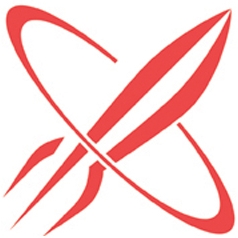This Week’s Industry News
Compiled by the Rocket Clicks Team
Top Stories
Google Search Console Adds Multiple New Features
This week brought quite a few changes to Google Search Console including new features and new insights into mobile-first indexing. To start, users now have the ability to copy code and search for words within the code in various tools including the AMP Test, Rich Results and the URL Inspection Tool.

Source: Search Engine Roundtable & Search Engine Journal
Google’s New Ad Format: Search Gallery Search Ads
Google will finally be implementing image ads into their search engine results page(SERP) later this year. Similar to Facebook’s Carousel Ads, Google will be introducing Gallery Search Ads as an option for advertisers. Gallery Search Ads will consist of between four to eight images depicting the product or service. And like expanded text ads, the images will be accompanied by up to three headlines of thirty characters. Google claims that advertisers are likely to see 25% more interactions in ad groups featuring Gallery Ads. This new ad format gives new opportunities for users to interact though it is still uncertain how these images will impact conversions.
Here are a few important things to note: (1) Gallery Ads will only be shown on mobile devices for the time being. Additionally, only one Gallery Ad will be shown per SERP, and will only be shown in the top placement. (2) Gallery Ads will compete in the same auction as Responsive Search Ads and Expanded Text Ads. Therefore, advertisers must win the top placement for their Gallery Ad to show. (3) All following placements will still have their text ads shown. If an advertiser who is not using Gallery Ads wins the top placement, their text ad will be shown. That being said, the frequency at which Gallery Ads will be shown will be contingent on both the auction and the rate in which advertisers include Gallery Ads in their arsenal.
Source: PPC Hero

Wayback Machine Testing New ‘Changes’ Feature
The Wayback Machine is introducing a new “changes” beta featured designed to identify and display changes in the content of archived URLs. SEOs can use this new tool within the Wayback Machine for link analysis, content analysis, troubleshooting, and so much more. Here’s how it works:

- Enter a URL and select the “Changes” option at the top
- Select two different archives to compare based on the system’s degree of relative change interface
- Hit ‘Compare’ to see the two URLs side-by-side with highlighted differences
- Yellow indicates content deletion, and Blue indicates content addition
Sources: Search Engine Land
Instagram Launches Branded Content Ads
Many brands like to implement influencer marketing into their advertising strategies–especially over platforms that are rich with images. Influencer marketing is very effective when targeting niche audiences. Instagram influencers generate large followings of users within a niche by establishing themselves as an authority through their content. Companies will pay to have an influencer promote their brand through their content. The downside of this strategy is that because this content is shared organically, it can only reach users that follow the influencer.
With Instagram’s new Branded Content Ads, advertisers are now able to place branded content into feeds, and soon stories by using the same targeted audiences as their other Instagram Ads. This allows advertisers to reach users who fit their niche but are not following their influencer.
Source: WordStream
Analysis:
How to Get SEO Insights From Your Client’s Help Desk
- Review support tickets and internal search queries for keyword research
-
-
- Take note of common phrases customers are using when they search the website and start to group these phrases into topic categories. Submit popular help articles through Google Search Console to identify any outstanding topics you may have missed.
-
- Use keyword research for content creation
-
-
- Once you’ve organized the common phrases people are using to find or search your site, you’ll start to notice topic gaps or areas that could benefit from further development. Google Analytics can help rank the importance of these topics considering the time users are spending on various existing documents.
-
- Gather user details for continued optimization
-
- After focusing on keyword research and content creation, consider diving further in for more information on your visitors. Use Google Analytics device-level data to see how users are reaching the site, which could indicate a need for more focus on mobile-friendliness. Also consider analyzing search behavior to recognize and cater to any trends in search seasonality.
Source: Search Engine Journal
Digital Marketing Strategies for B2B Audiences
- LinkedIn:
-
-
- Despite having higher-than-usual CPCs, LinkedIn is perhaps the most targeted platform for B2B digital marketing. Marketers are able to target users according to their company, industry, organization size, job functions, seniority, and more. LinkedIn is also now equipped to run cross-channel remarketing campaigns to meet professionals at multiple touch points in their buying process.
-
-
-
- Audience Insights is a great tool for learning more about how to target new customers. By analyzing user data from those who interact with your brand through Facebook, we can learn how to better target users across other platforms.
-
- Lookalike Audiences
-
- B2B marketers should take advantage of Lookalike audiences across different advertising channels as a way to extend beyond individual targeting options. Lookalikes are generated by allowing algorithmic learning find new potential leads based on the information it already has about users that you have already interacted with.
Source: WordStream




















